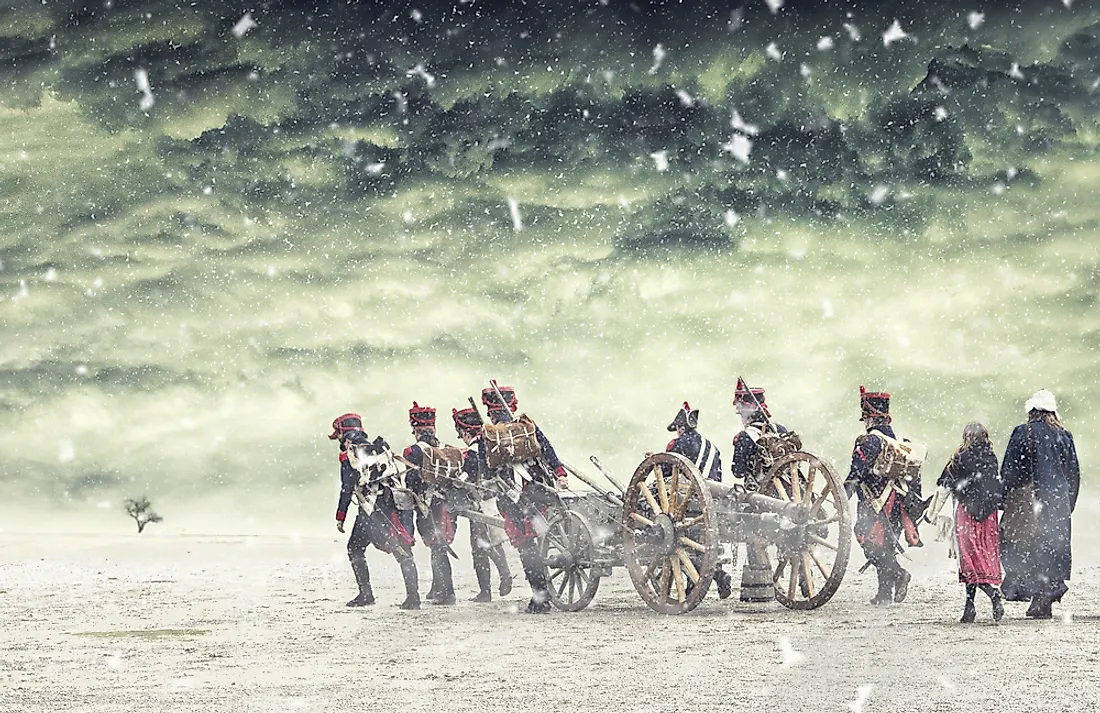The Battle of Austerlitz: The Napoleonic Wars

5. Background
The Battle of Austerlitz, also called The Battle of Three Emperors, took place in Moravia, in what is today Slavkov u Brna in the Czech Republic. The battle was fought on December 2nd, 1805. It was the last, and ultimately decisive, engagement in the War of the Third Coalition, which was fought between the forces of Napoleonic France on one side, and an alliance between the Holy Roman Empire, Russia, and Austria on the other. This war was itself but a three-year chapter lasting from 1803 to 1806, the start of the lengthier saga of the Napoleonic Wars, which in total lasted from 1803 until 1815. Austerlitz was one of Napoleon’s greatest victories, drawing comparisons with Hannibal's great victory when his army of Carthage defeated the Roman Republic's forces at Cannae in 216 BC during the Punic Wars.
4. Makeup
The French Army was under the supreme command of Emperor Napoleon I, with Marshal Louis Alexander Berthier as his Chief of Staff, while the General of Division Nicolas-Marie Songis de Courbons commanded the French artillery. French numbers are estimated to have stood at around 73,000 men of arms, backed by 139 artillery pieces. They faced the combined Imperial armies of Russia and the Holy Roman Empire, under the nominal command of Tsar Alexander I and Emperor Francis II, respectively. In reality, however, the true field command under Alexander I was taken by Russian General Kutusov, while the Holy Roman Empire's forces were led by Prince Johann von Liechtenstein. The Allied Imperial forces amounted to approximately 85,400 men, having 278 large guns of all types supporting them.
3. Description
The Allies deployed their forces west of Austerlitz, occupying the Pratzen Plateau. This was a spot Napoleon had scouted days earlier, regarding it as the ideal place for the battle to take place. Anticipating that the Allies would launch their main strike against his right flank in order to cut him off from Vienna, Napoleon thinned it in order to give it the illusion of being weak. In actuality, the French Marshal Louis Davout’s corps of 10,500 men proved to be a stout resistance against the 40,000 storming Allied troops that attacked them while, in tandem, the fierce Allied attack on his northern flank was similarly repulsed. When Napoleon judged the Allied center on the Plateau to be sufficiently weakened, he launched Marshal Nicholas Soult with 20,000 infantry up the Pratzen slope.
2. Outcome
Napoleon’s promise to Soult of dealing “one sharp blow and the war is over” was fulfilled when the Marshal captured and ultimately held the Plateau in question. Allied forces were then split in two by the French cavalry, and the two severed halves of the Allied forces were each chased north and south of the Plateau, respectively. Napoleon had won a decisively clear victory, partly through having chosen the battlefield himself on his scouting expedition. Furthermore, the Emperor had a more professional and democratically organized army at his service than did the Russian Army, wherein beatings were the main form of discipline and motivation. Both the Russian and Austrian armies were still organized along the lines of those seen in the 18th Century, while Napoleon’s forces had progressed into the cutting edge of 19th Century warfare.
1. Significance
Napoleon’s brilliantly tactical victory ended the War of the Third Coalition. France and Austria signed a truce on December 4th 1805, with the ensuing Treaty of Pressburg justifying British Prime Minister William Pitt’s advice to “roll up that map, it will not be wanted these ten years.” Pressburg redrew the map of Europe though, some argue, with some due justice. Austria was forced to honor previous treaties with the French, and Venice was given over to the Kingdom of Italy. Napoleon also created a string of small states along the Rhine, which serves as a bulwark against Prussia.











